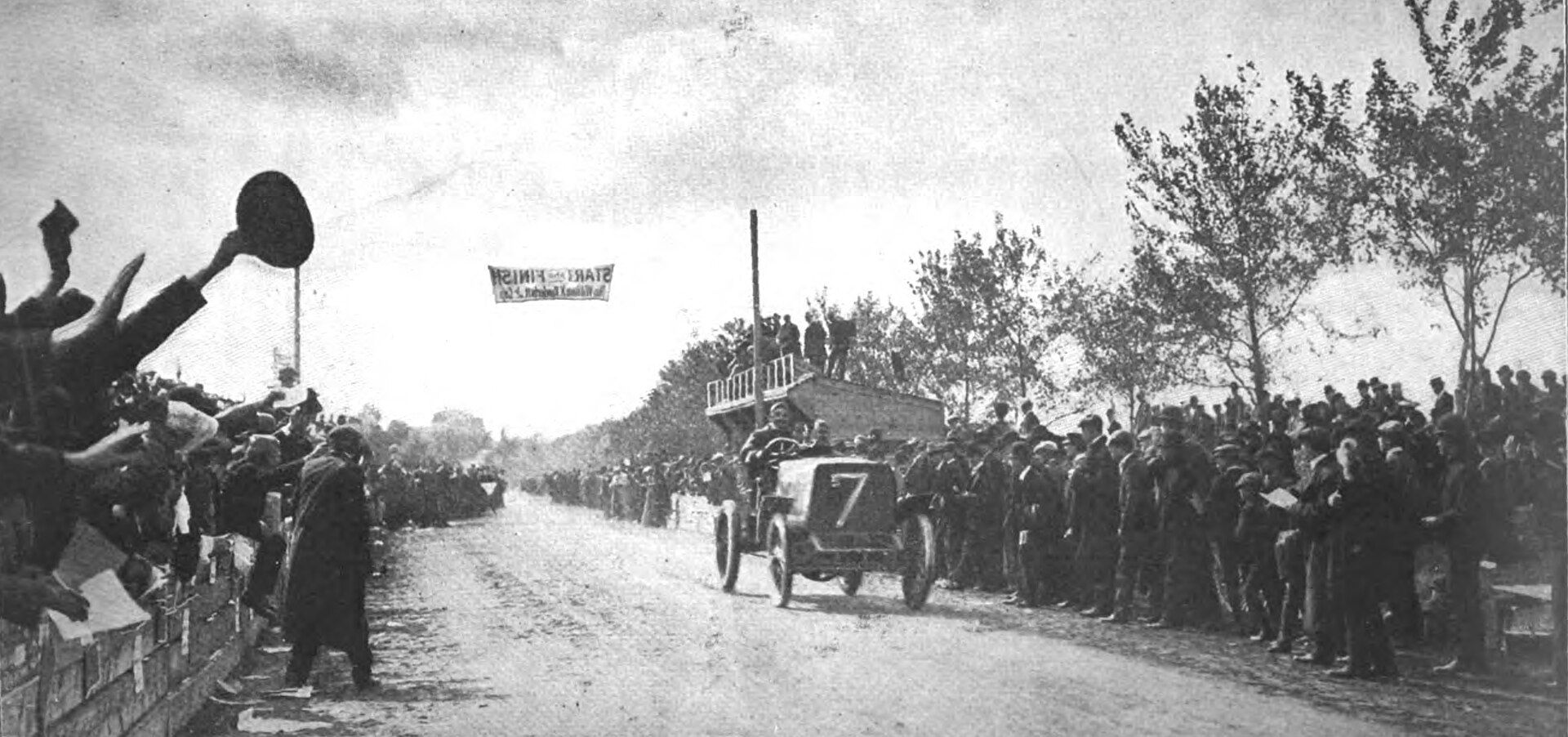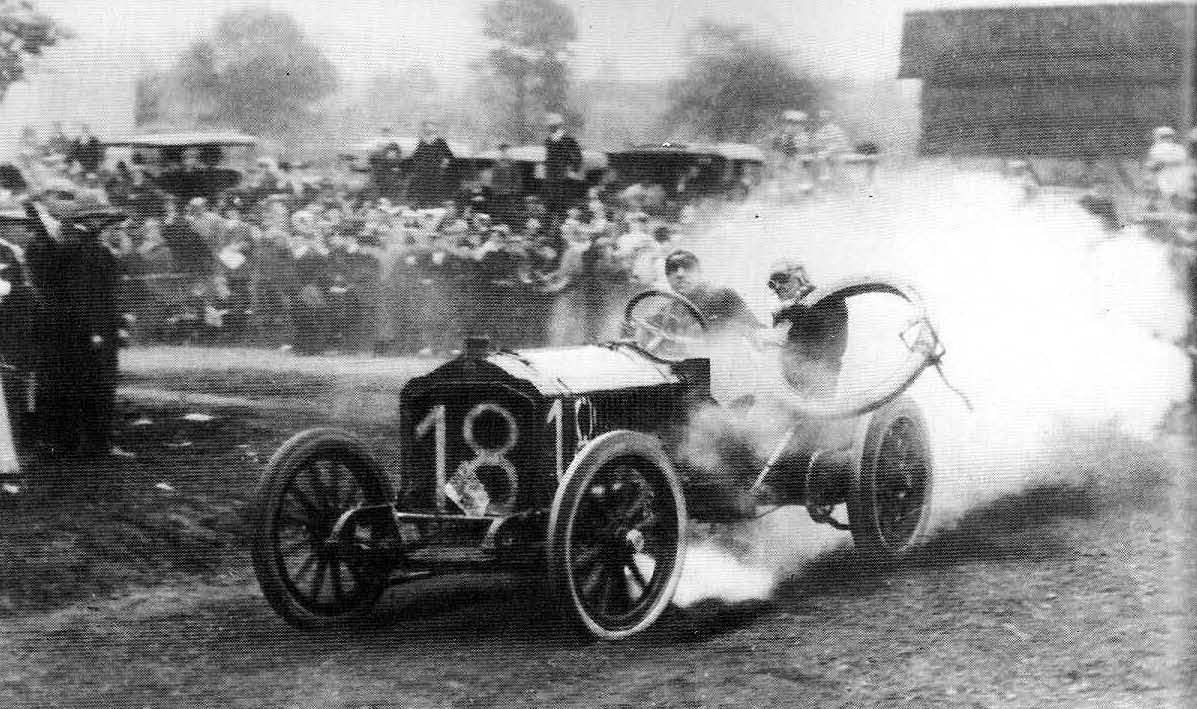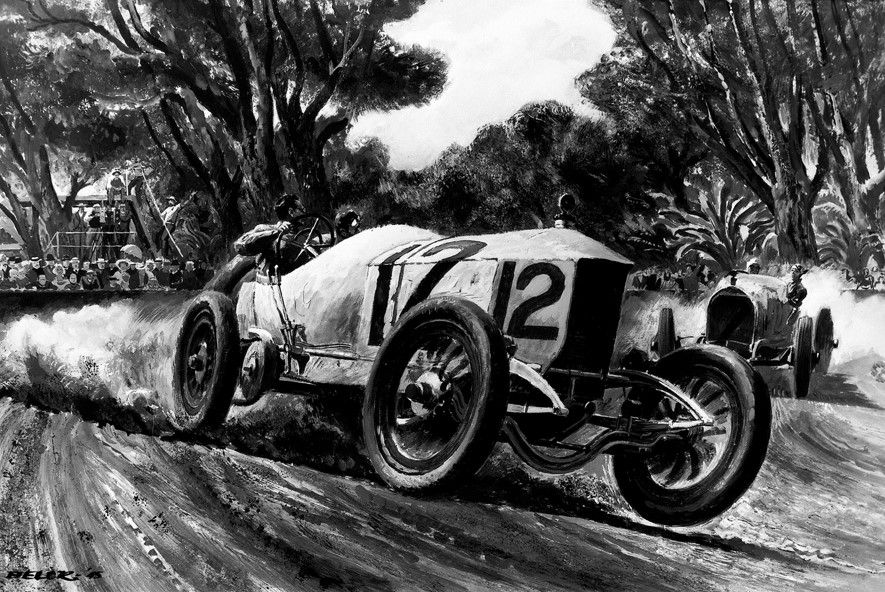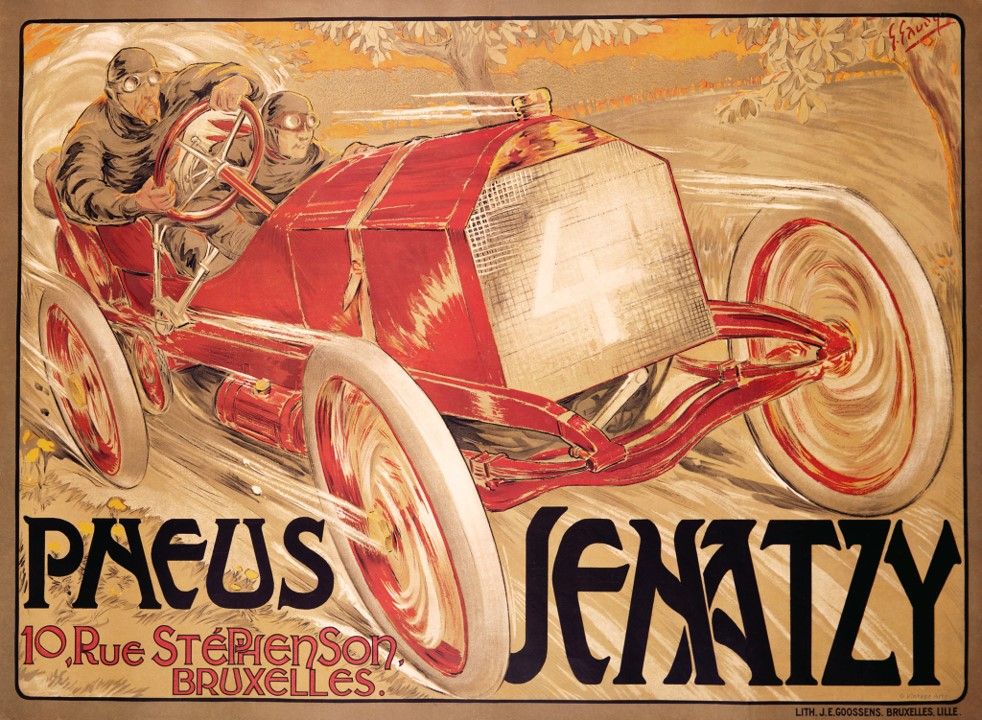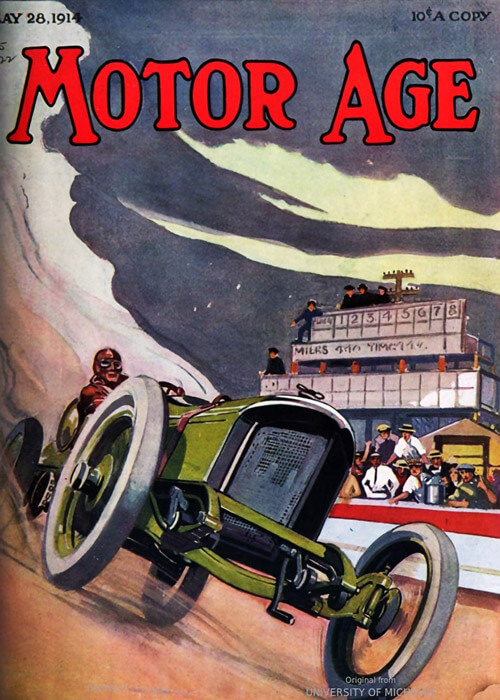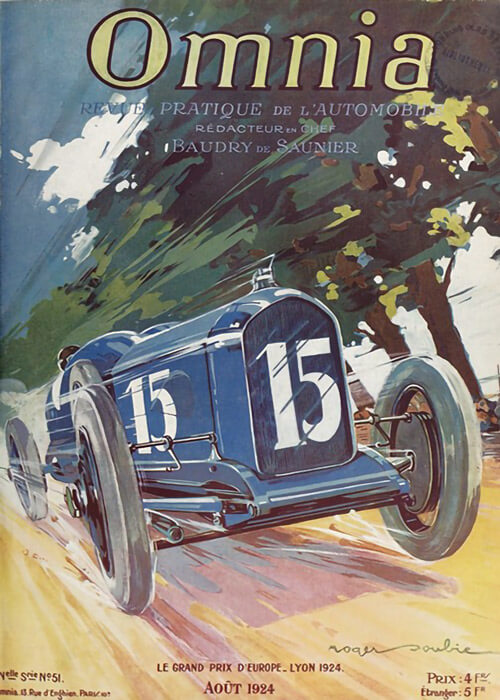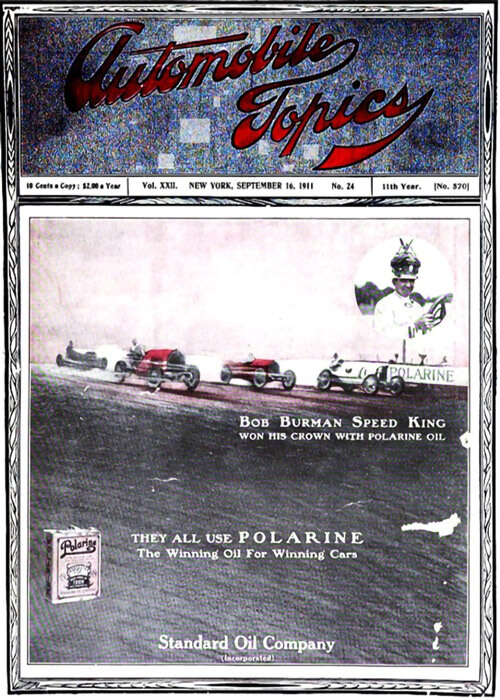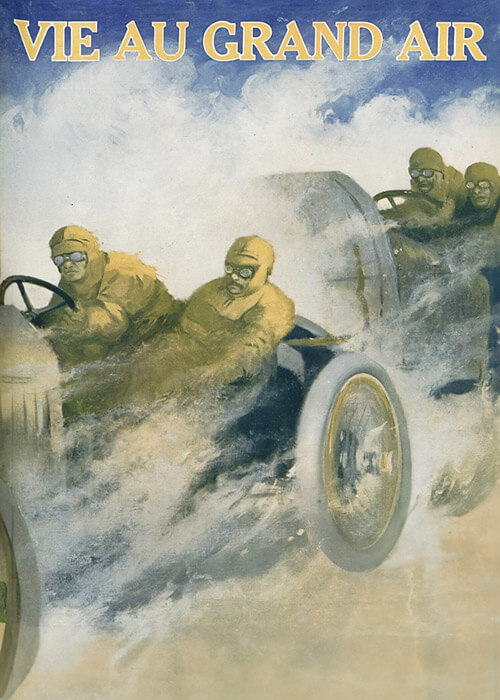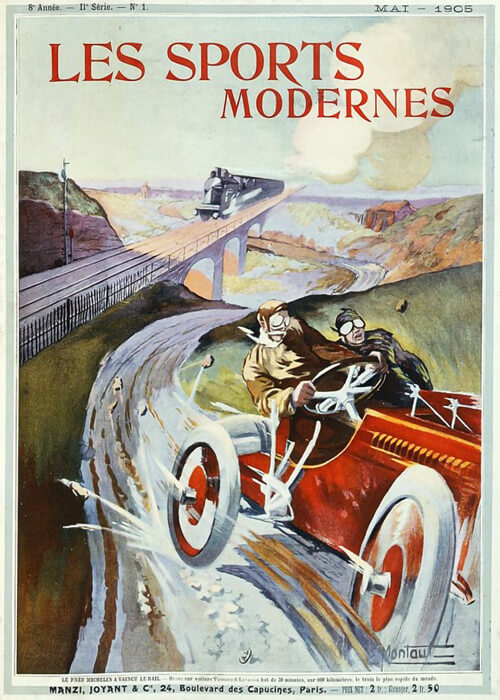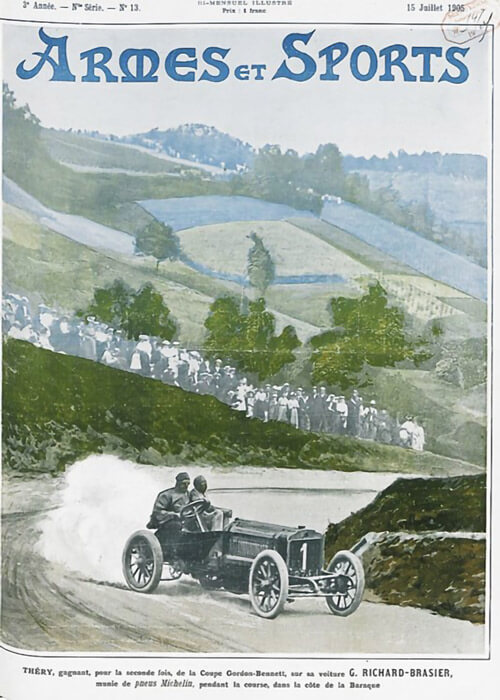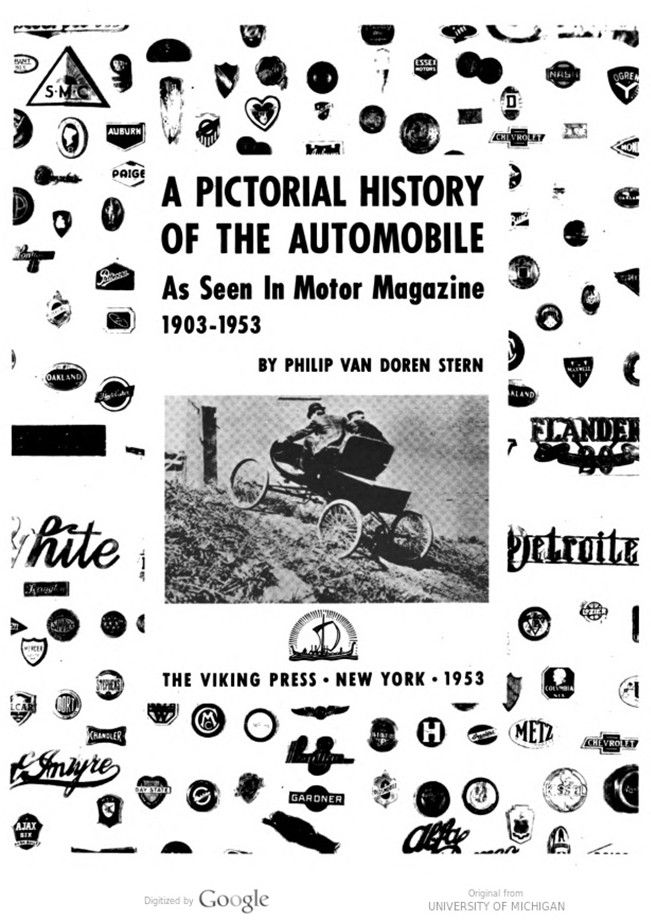
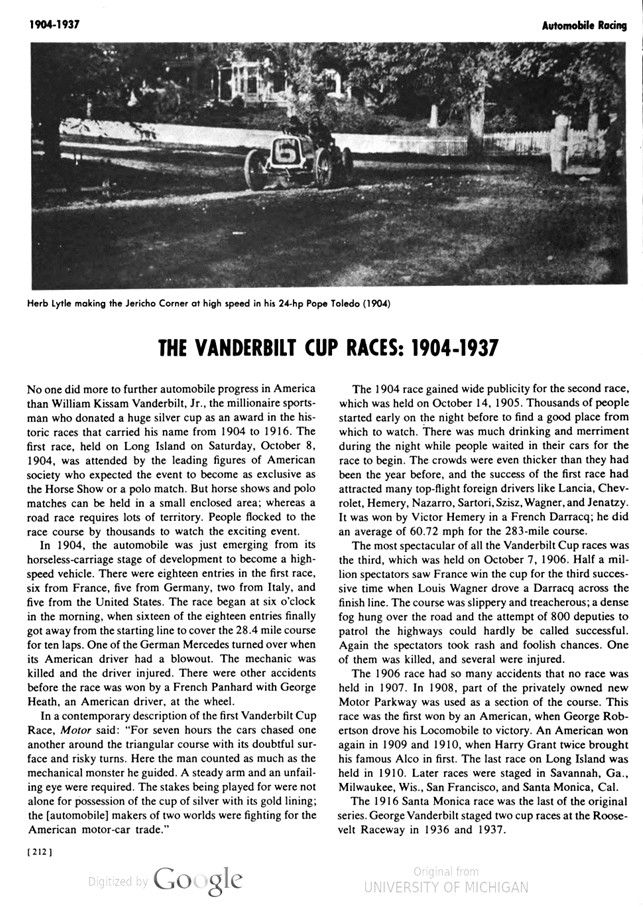
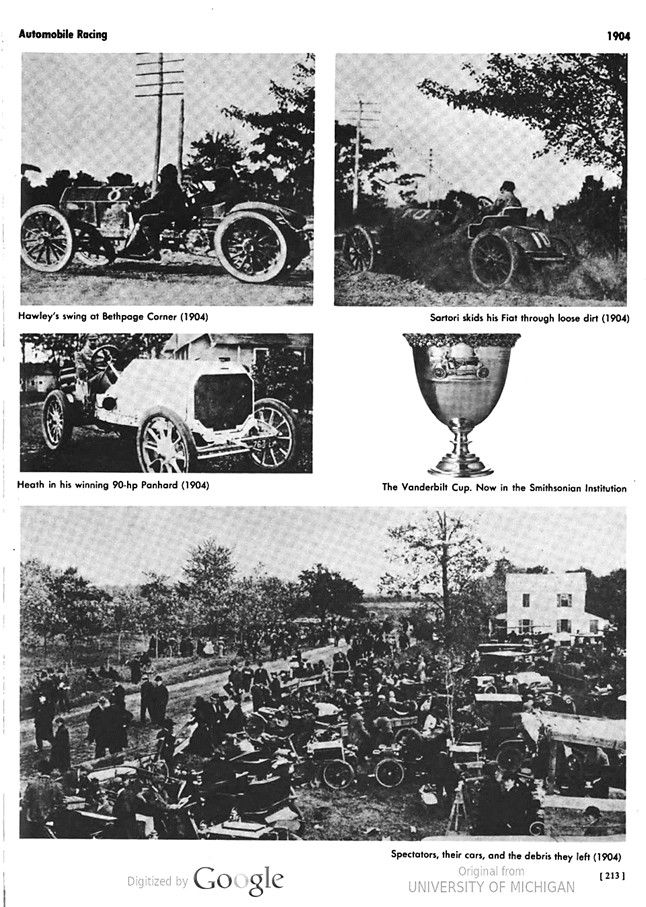
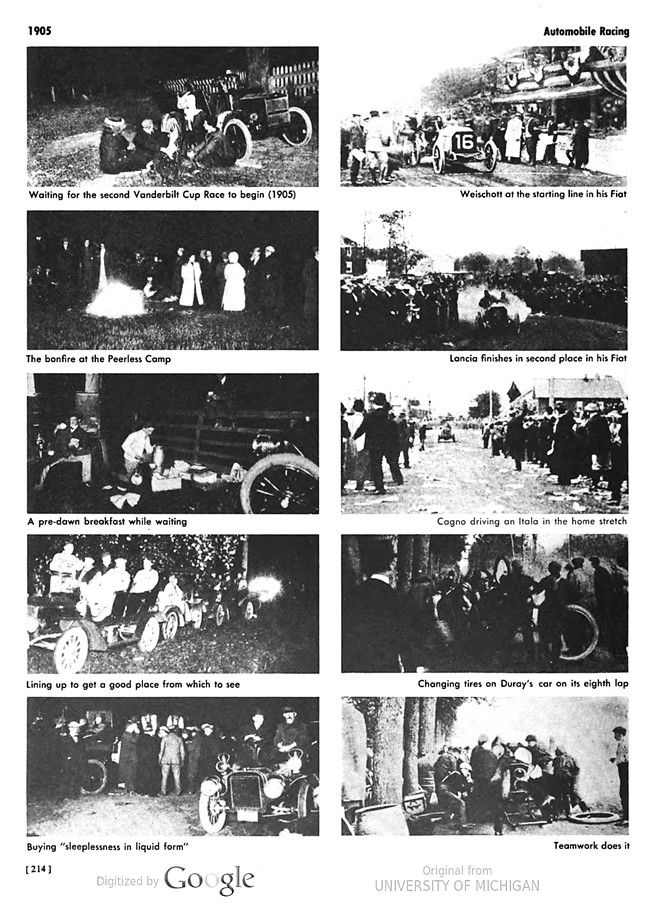
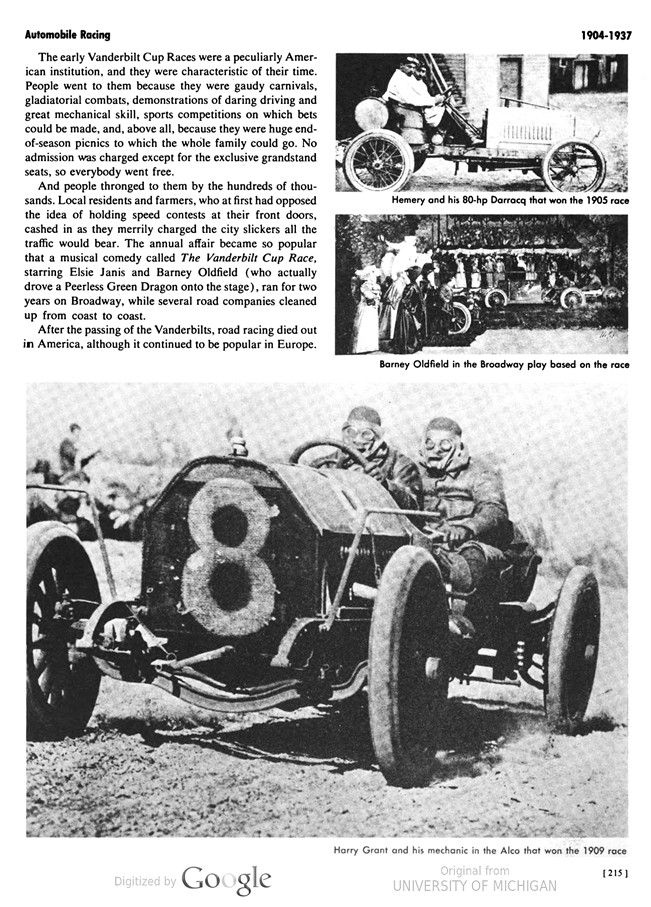
Text and photos compiled by motorracingistory.com, with courtesy of hathitrust.org, USA.
A pictorial history of the American automobile, as seen in Motor Magazine 1903-1953.
By Philip Van Doren Stern, Viking Press, New York, 1953.
THE VANDERBILT CUP RACES: 1904-1937
No one did more to further automobile progress in America than William Kissam Vanderbilt, Jr., the millionaire sportsman who donated a huge silver cup as an award in the historic races that carried his name from 1904 to 1916. The first race, held on Long Island on Saturday, October 8, 1904, was attended by the leading figures of American society who expected the event to become as exclusive as the Horse Show or a polo match. But horse shows and polo matches can be held in a small enclosed area, whereas a road race requires lots of territory. People flocked to the racecourse by thousands to watch the exciting event.
In 1904, the automobile was just emerging from its horseless-carriage stage of development to become a high-speed vehicle. There were eighteen entries in the first race, six from France, five from Germany, two from Italy, and five from the United States. The race began at six o’clock in the morning, when sixteen of the eighteen entries finally got away from the starting line to cover the 28.4 mile course for ten laps. One of the German Mercedes turned over when its American driver had a blowout. The mechanic was killed, and the driver injured. There were other accidents before the race was won by a French Panhard with George Heath, an American driver, at the wheel.
In a contemporary description of the first Vanderbilt Cup Race, Motor said: „For seven hours the cars chased one another around the triangular course with its doubtful surface and risky turns. Here the man counted as much as the mechanical monster he guided. A steady arm and an unfailing eye were required. The stakes being played for were not alone for possession of the cup of silver with its gold lining; the (automobile) makers of two worlds were fighting for the American motor-car trade.“
The 1904 race gained wide publicity for the second race, which was held on October 14, 1905. Thousands of people started early on the night before to find a good place from which to watch. There was much drinking and merriment during the night while people waited in their cars for the race to begin. The crowds were even thicker than they had been the year before, and the success of the first race had attracted many top-flight foreign drivers like Lancia, Chevrolet, Hemery, Nazarro, Sartori, Szisz, Wagner, and Jenatzy. It was won by Victor Hemery in a French Darracq; he did an average of 60.72 mph for the 283-mile course.
The most spectacular of all the Vanderbilt Cup races was the third, which was held on October 7, 1906. Half a million spectators saw France win the cup for the third successive time when Louis Wagner drove a Darracq across the finish line. The course was slippery and treacherous; a dense fog hung over the road and the attempt of 800 deputies to patrol the highways could hardly be called successful. Again, the spectators took rash and foolish chances. One of them was killed, and several were injured.
The 1906 race had so many accidents that no race was held in 1907.
In 1908, part of the privately owned new Motor Parkway was used as a section of the course. This race was the first won by an American, when George Robertson drove his Locomobile to victory.
An American won again in 1909 and 1910, when Harry Grant twice brought his famous Alco in first. The last race on Long Island was held in 1910. Later races were staged in Savannah, Ga., Milwaukee, Wis., San Francisco, and Santa Monica, Cal.
The 1916 Santa Monica race was the last of the original series. George Vanderbilt staged two cup races at the Roosevelt Raceway in 1936 and 1937.
The early Vanderbilt Cup Races were a peculiarly American institution, and they were characteristic of their time. People went to them because they were gaudy carnivals, gladiatorial combats, demonstrations of daring driving and great mechanical skill, sports competitions on which bets could be made, and, above all, because they were huge end-of-season picnics to which the whole family could go. No admission was charged except for the exclusive grandstand seats, so everybody went free.
And people thronged to them by the hundreds of thousands. Local residents and farmers, who at first had opposed the idea of holding speed contests at their front doors, cashed in as they merrily charged the city slickers all the traffic would bear. The annual affair became so popular that a musical comedy called The Vanderbilt Cup Race, starring Elsie Janis and Barney Oldfield (who actually drove a Peerless Green Dragon onto the stage), ran for two years on Broadway, while several road companies cleaned up from coast to coast.
After the passing of the Vanderbilts, road racing died out in America, although it continued to be popular in Europe.
Picture captions.
1904-1937 Automobile Racing 6 Herb Lytle making the Jericho Corner at high speed in his 24-hp Pope Toledo (1904)
Hawley’s swing at Bethpage Corner (1904) – Sartori skids his Fiat through loose dirt (1904) – Heath in his winning 90-hp Panhard (1904) – The Vanderbilt Cup. Now in the Smithsonian Institution – Spectators, their cars, and the debris they left (1904)
Waiting for the second Vanderbilt Cup Race to begin (1905) – Weischott at the starting line in his Fiat – The bonfire at the Peerless Camp – Lancia finishes in second place in his Fiat – A pre-dawn breakfast while waiting – Cagno driving an Itala in the home stretch – Lining up to get a good place from which to see – Changing tires on Duray’s car on its eighth lap – Buying „sleeplessness in liquid form“ – Teamwork does it
Hemery and his 80-hp Darracq that won the 1905 race – Barney Oldfield in the Broadway play based on the race – Harry Grant and his mechanic in the Alco that won the 1909 race.
